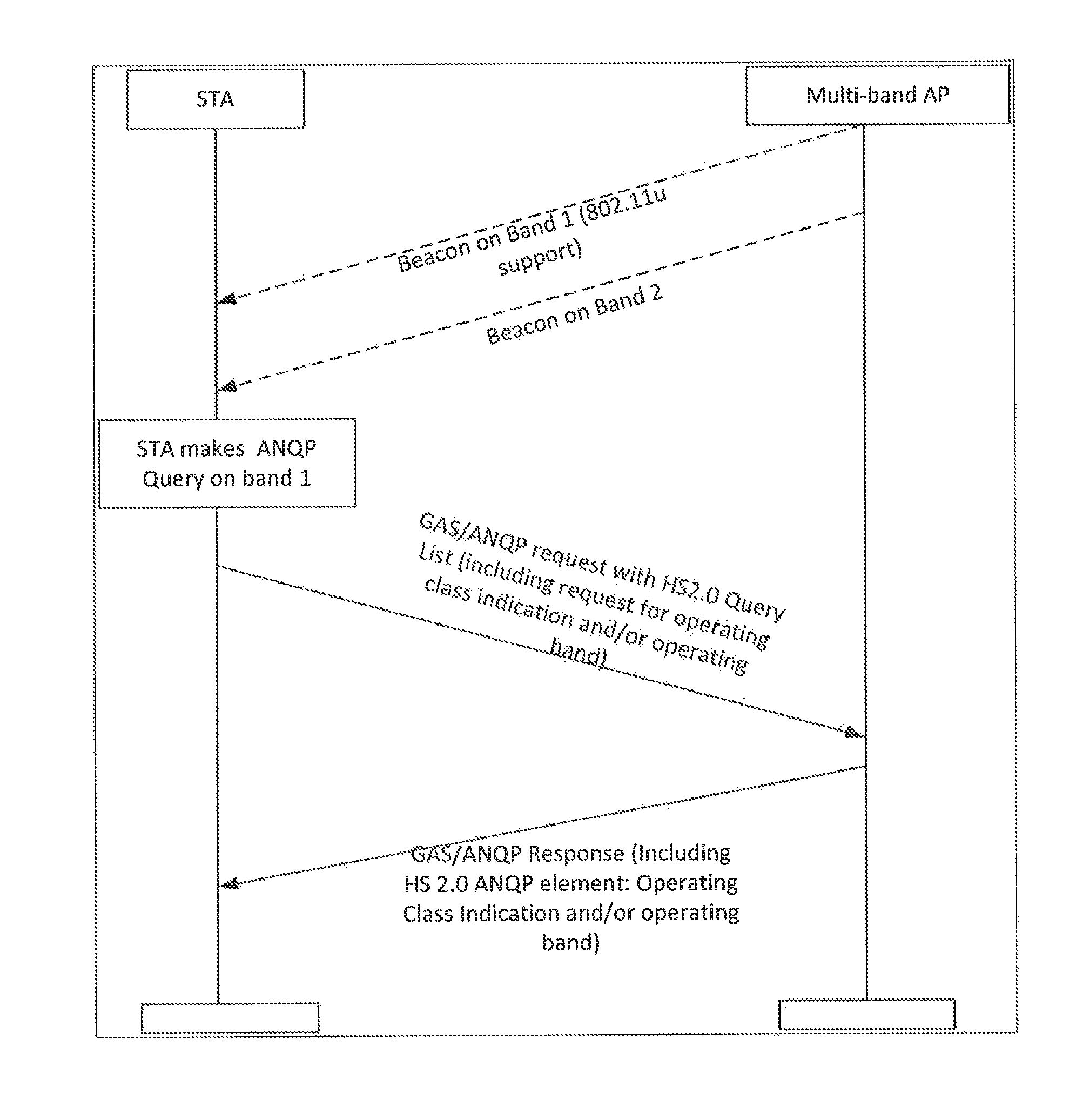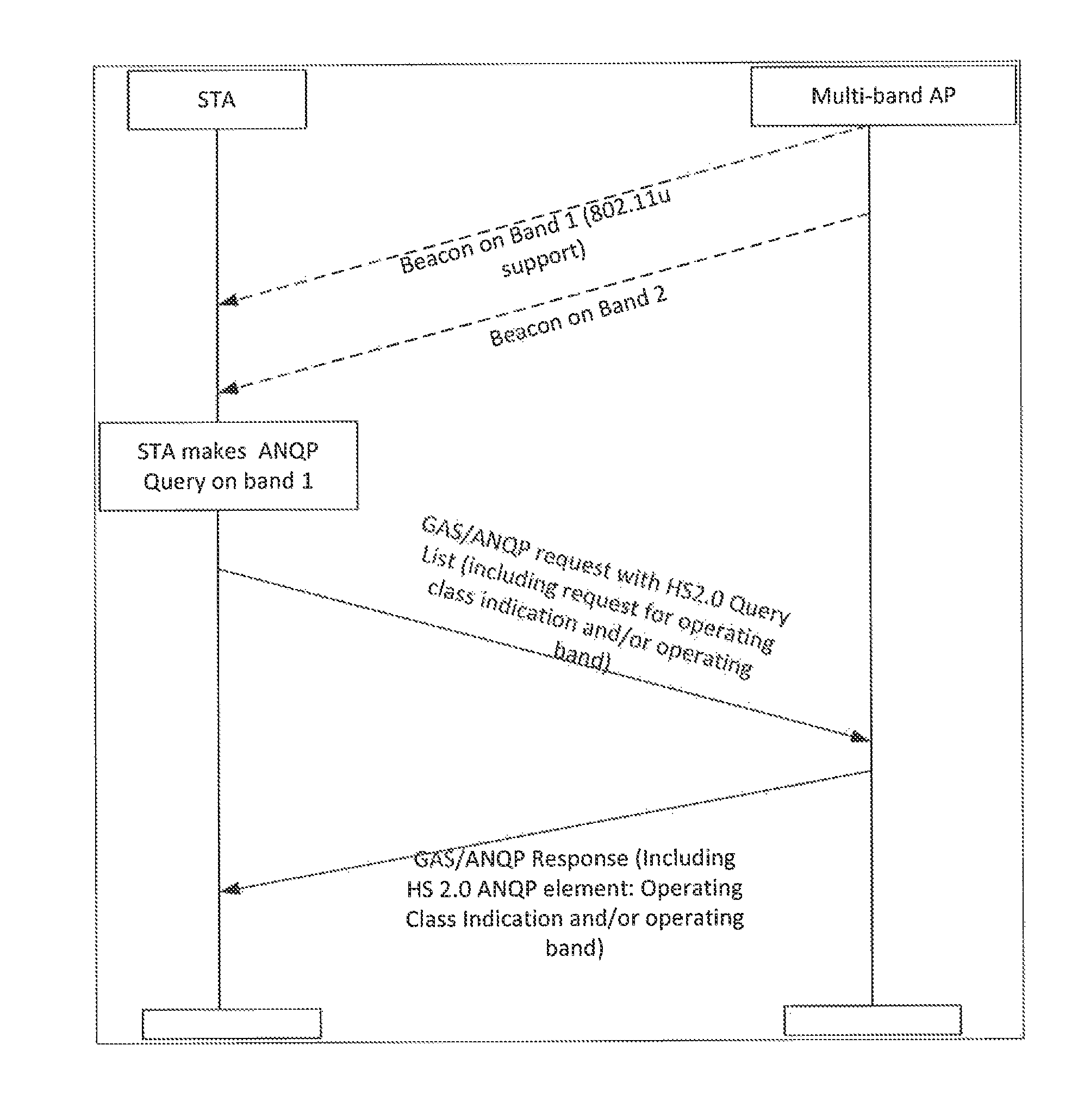Operating band support for a Wireless Local Area Network
a wireless local area network and operating band technology, applied in the direction of electrical equipment, wireless commuication services, assess restrictions, etc., can solve the problems of limiting the data provided, difficult for any wireless device to obtain any information about the ap, and difficult for the wlan device to make an informed, so as to improve the access of the ap and enhance the decision
- Summary
- Abstract
- Description
- Claims
- Application Information
AI Technical Summary
Benefits of technology
Problems solved by technology
Method used
Image
Examples
Embodiment Construction
[0030]The invention relates to a Multi-band Access Point (AP). Existing access points have used 2.4 GHz, but frequency bands in the area of 5 GHz have become available. Further frequency bands may become available in due course, such as 60 Ghz and television “whitespace”. The 5 GHz band has both advantages and drawbacks compared to 2.4 GHz, for example coverage and Dynamic Frequency Selection (DFS) support. However, the migration from 2.4 GHz to 5 GHz presents some benefits for users (increased QoS for some priority stream, load balancing). The availability of the two or more bands with multiband devices opens up more opportunities, assuming the fact that some multiband requirements are fulfilled. Moreover, the existing frequency bands may also be sub-divided into channels, each of which could be considered as a separate frequency band.
[0031]More and more access points are available in the market and those which are compatible with IEEE 802.11n are dual band capable, in switchable (...
PUM
 Login to View More
Login to View More Abstract
Description
Claims
Application Information
 Login to View More
Login to View More - R&D
- Intellectual Property
- Life Sciences
- Materials
- Tech Scout
- Unparalleled Data Quality
- Higher Quality Content
- 60% Fewer Hallucinations
Browse by: Latest US Patents, China's latest patents, Technical Efficacy Thesaurus, Application Domain, Technology Topic, Popular Technical Reports.
© 2025 PatSnap. All rights reserved.Legal|Privacy policy|Modern Slavery Act Transparency Statement|Sitemap|About US| Contact US: help@patsnap.com


